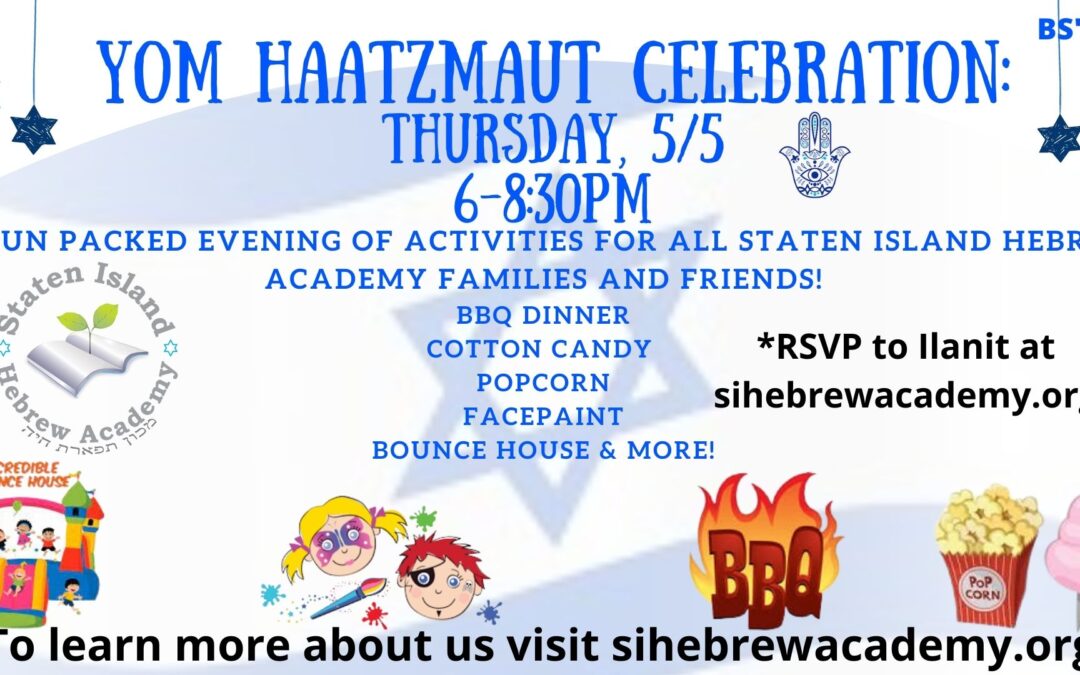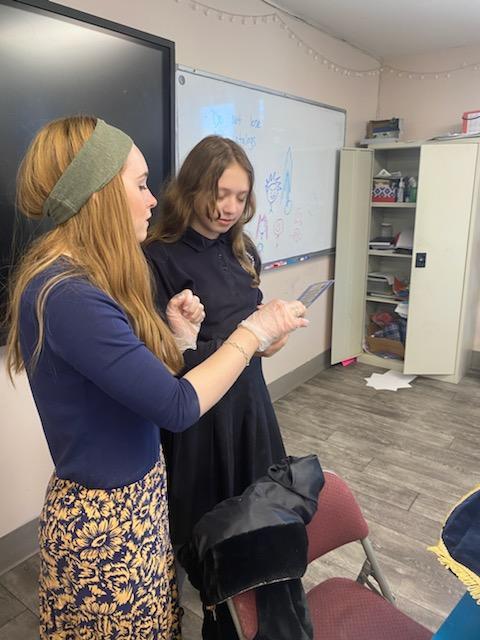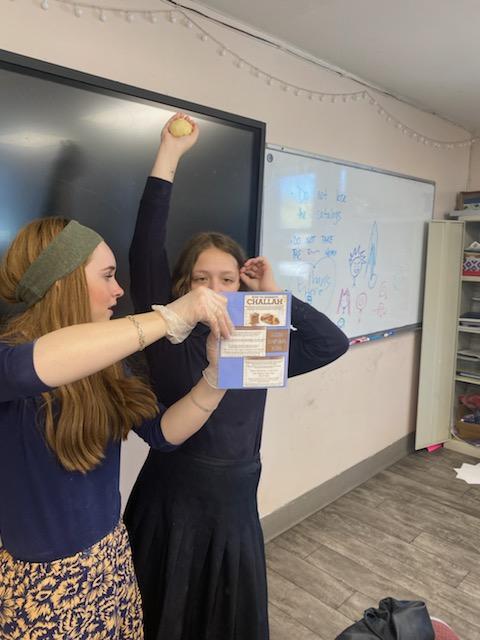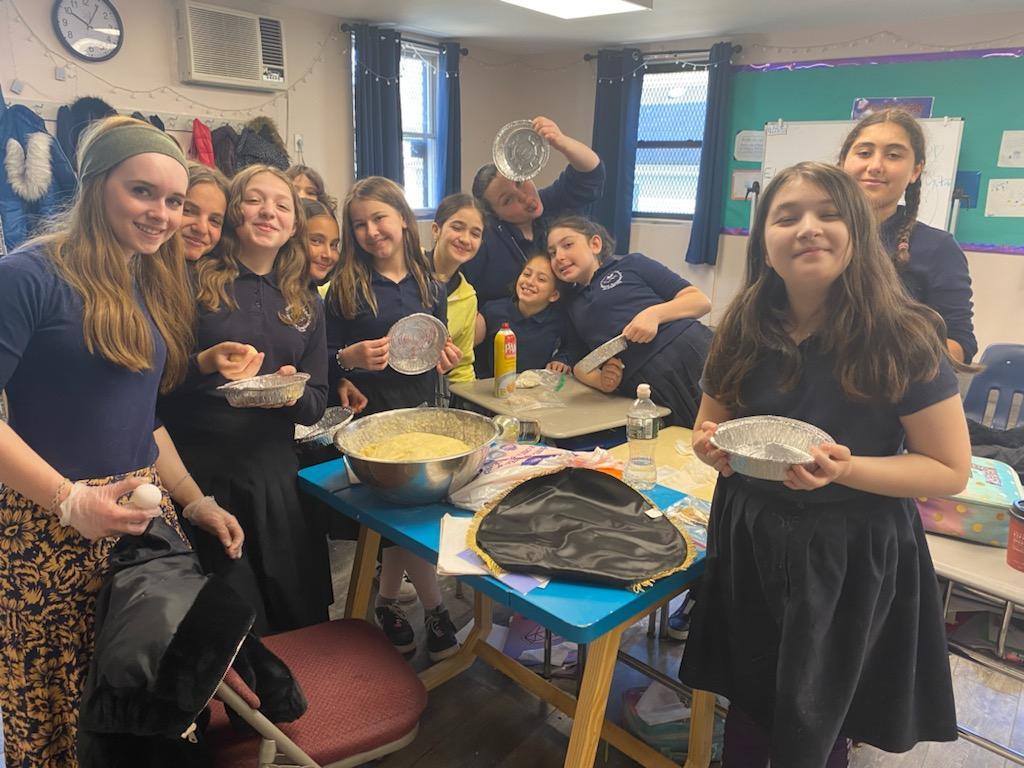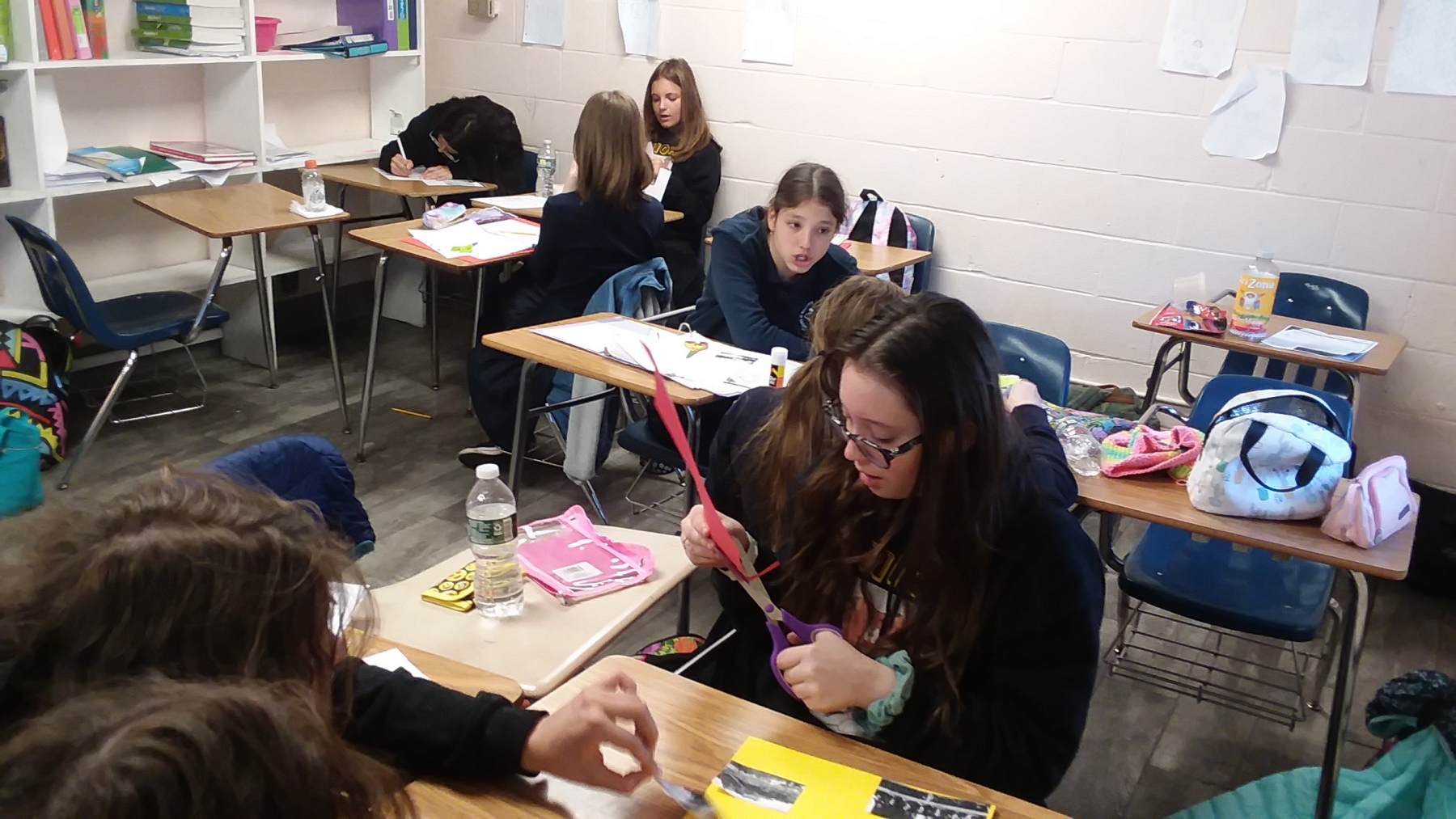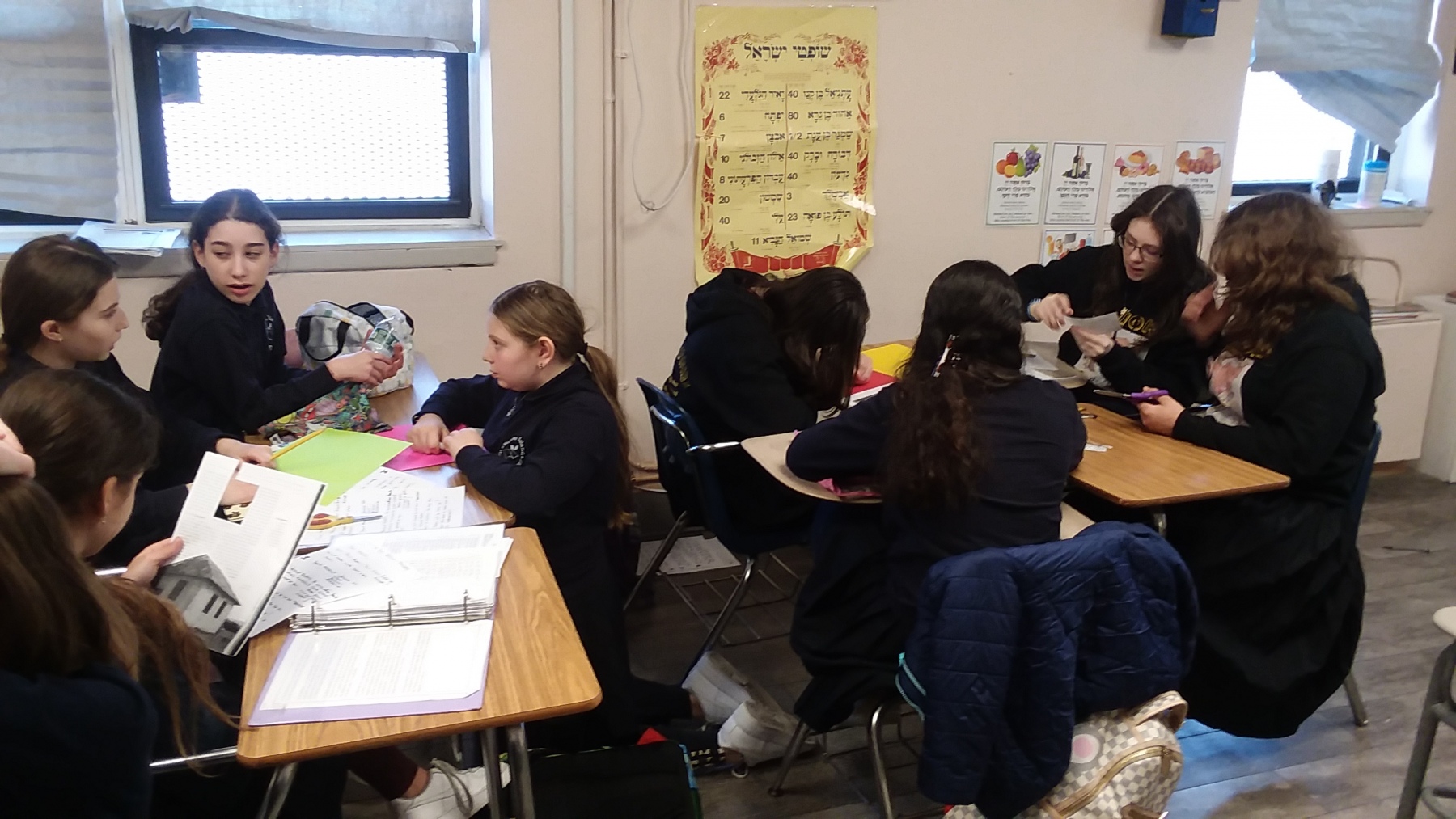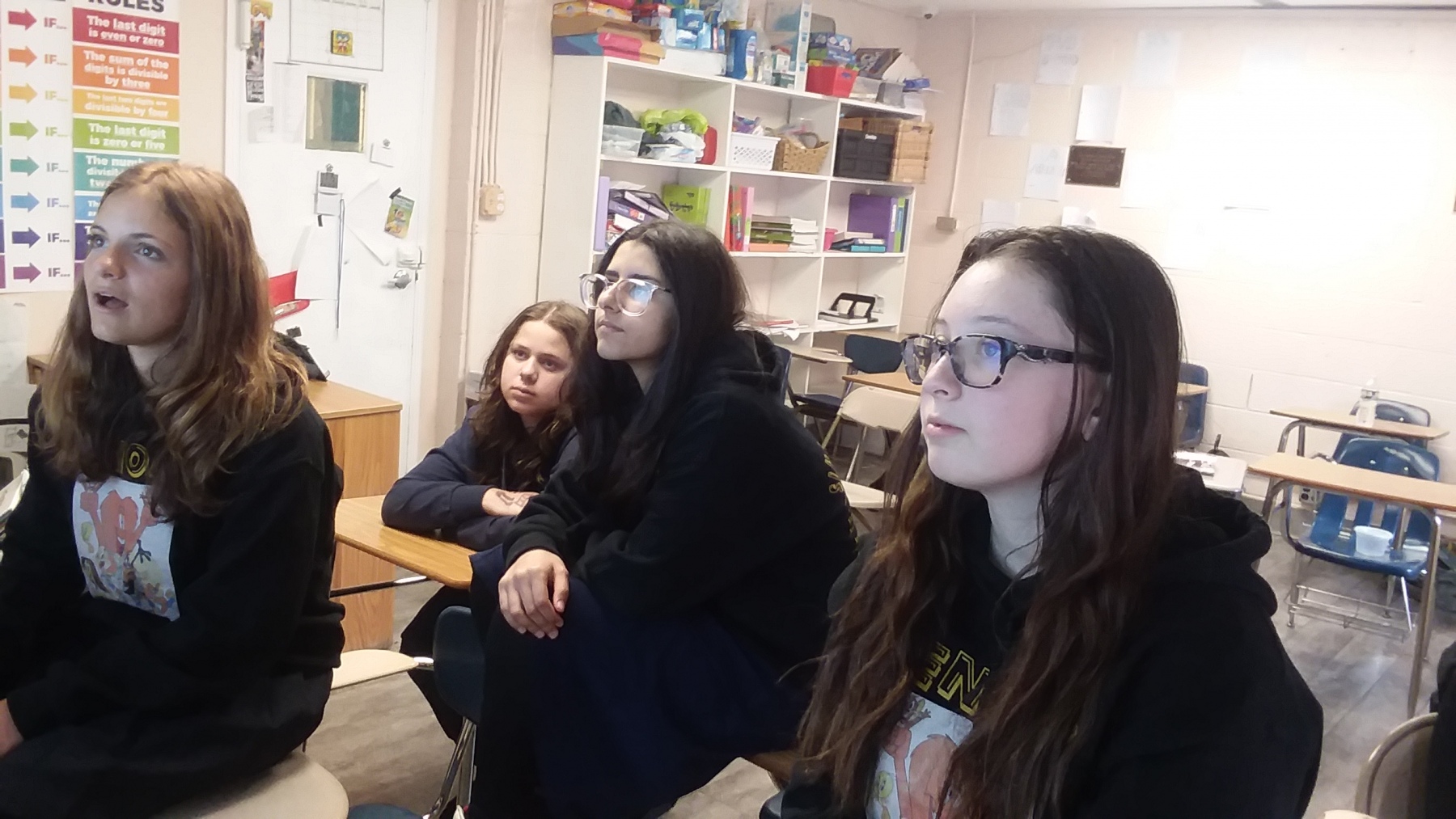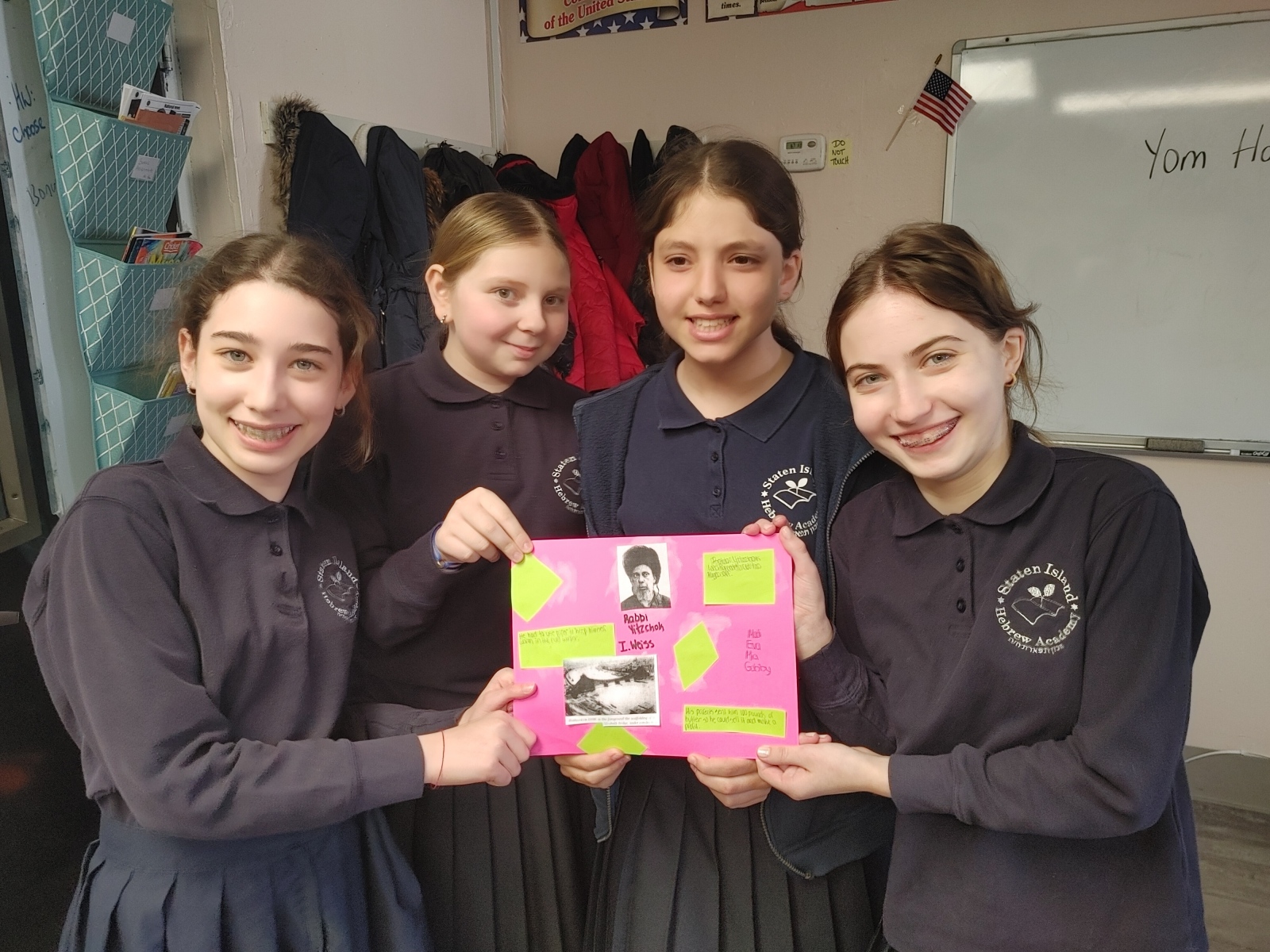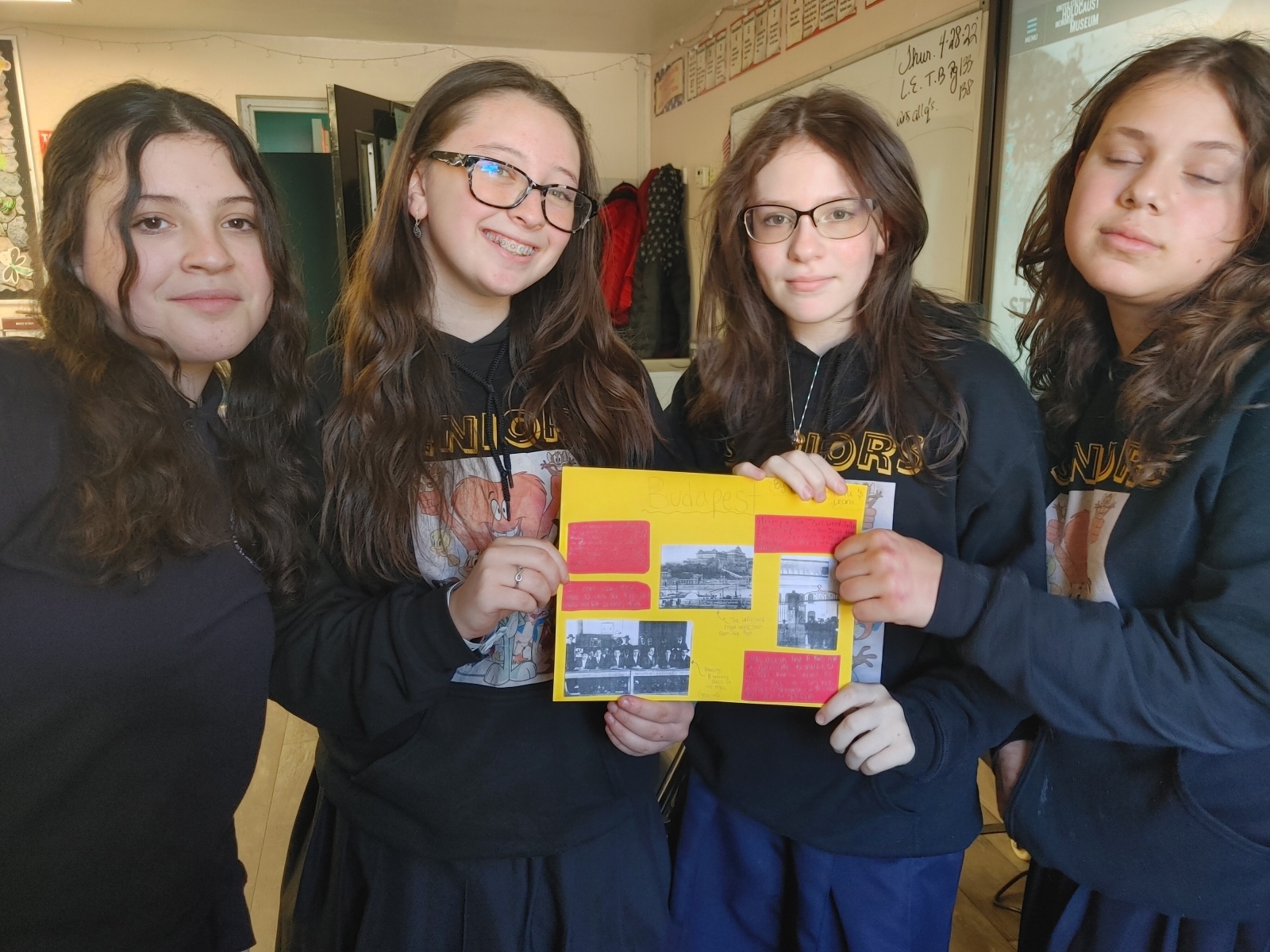Dvar Torah
Parshat Acharay Mot
In a normal, twelve month year, the Parshiot of Acharay Mot and Kidoshim are read together. This year, because of the added month of Adar Shainy, these Parshiot are read separately, this week Acharay mot and the next week Kidoshim. There is a disagreement, however, as to which Haftorah should be read after the Torah reading each week.
Some are of the opinion that a section from Yechezkal should be read for Acharay Mot and a section from Amos should be read for Kidoshim. While others have the reverse order. Rabbi Soloveitchik disagreed with both of these opinions. He felt that the section from Amos should be read for both Parshiot and the portion from Yechezkal should never be read. He based his explanation upon the opinion of Rabbi Eliezer (Megillah 25 A) who said that we should never read the Haftorah for Acharay Mot because it only deals with the tragedy of Jersualem. That Haftorah is an indictment of the Jews of that time who callously violated the admonitions of the Torah and brought about the destruction of Jerusalem and their exile. Since it has no component of consolation it therefore cannot be read.
Now let us turn to the Haftorah from Amos. Why is that Haftorah so appropriate that Rabbi Soloveitchik felt it should be read on both weeks and what connection is there between the haftorah and the Torah readings of Acharay Mot and Kidoshim?
There is a very unique phenomenon that is revealed in these two Torah portions that, heretofore, was unknown. The fact that the Land of Israel was to be given to the Jewish people was previously promised to our forefathers many, many times. There, however, in the portions of Acharay Mot and Kidoshim, a new dimension was added; that our ability to exist and remain in the Land of Israel was made conditional upon our adherence to the Torah and its mitzvot. Our ability to retain our presence in the land was made dependent upon our commitment and allegiance to Hashem’s commandments.
In Parshat Acharay Mot (Chapter 18, Verse 28) it says for the first time, “That the land should not vomit you out when you defile it, as it vomited out the nations before you.” Again, it is reiterated in the following Parsha of Kidsohim (Chapter 20, Verse 22) “you shall keep my statues and my ordinances and do them, so that the land, that I will bring you to dwell in, should not vomit you out.” Our commentaries all explain that our eviction from the Land of Israel wasn’t a punishment for our sins. Rather, the special sanctity of the Land of Israel is such that it just cannot tolerate sin, and, eventually, vomits out those who violate its specialty. This is what was revealed in both of these Portions.
Now that the Torah has informed us that our stay is conditional on our behavior and if we violate the holiness of the land we will be exiled, it was necessary to have a Haftorah that deals with our return. As the Prophet Amos predicted long ago, “ I will return the captives of my people Israel (to the Land of Israel) and they shall rebuild the wasted cities and inhabit them, and they shall plant the vineyards and drink the wine and make ardens and eat fruit of them, And I will plant them upon their land and they shall no longer be plucked off from the land which I have given them.”
Accordingly, the reading of this Haftorah after both of these Parshiot is crucial and imperative. It reaffirms our bond with the Land of Israel irrespective of exile and “galut” and comforts and consoles the Jewish people by promising them that they will eventually return. We may be exiled for many years, even centuries, yet our ties are never severed and we will on day return. This is certainly the consolation that our Rabbis knew we ought to hear, lest we despair and give up hope.
In our time, when we have seen the realization and fulfillment of the words of the prophet Amos regarding the rebuilding of the Land of Israel, we certainly can take heart and await the realization of all the words of our Prophets and await the Messiah, who was foretold by our Prophets as well. We pray that this should occur speedily in our time.
Rabbi Dr. Richard Ehrlich
Special Announcement
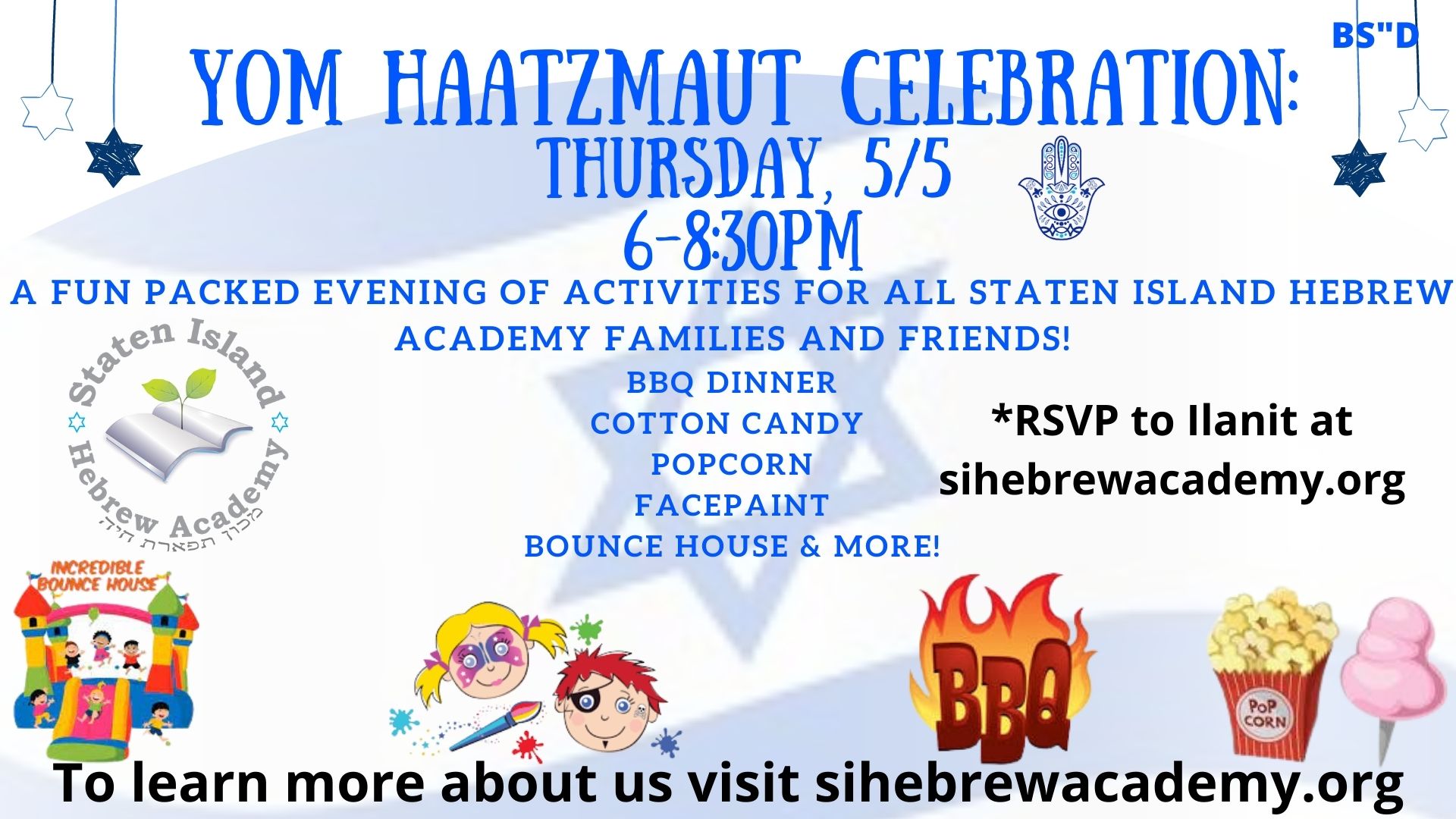
Dear parents.
Thank G-d, we had another wonderful week at Siha!
Next week is a very exciting week. We are starting off on Monday with an exciting Rosh Chodesh Assembly in honor of Rosh Chodesh Iyar.
Stay tuned for the amazing activity your children will be having.
Rosh Chodesh is on Sunday and Monday.
Thursday night, May 5, is the Siha Yom Haatzmaut celebration. Don’t miss it!
See the flyer for the details.
Shabbat Shalom U’mevorach!
Best regards,
Mrs Perlstein (AKA Miss Dershowitz)
Mrs Ferber
Happy birthday to our very own Ms. Ety Perez!
The 5th Grade made a surprise party for Ms. Ety on her birthday! Awesome job, 5th grade!
Judaics
Kindergarten and First Grade
We had a great week back in school!
I was so proud to hear how beautifully the children sang the ma nishtana at home and participated in their seders!
We began learning about Sefirat Ha’omer – counting the days between Pesach and Shavuot in anticipation of the holiday where we received the Torah! We make sure to count the days each day (in Hebrew!) and move the man on our Har Sinai poster.
In kriah, the first graders got right back into the swing of things! We learned how to separate a word into syllables to make it easy to read. The kindergarteners learned the letter kuf. They can read the letters like pros!
In kesiva, the first graders can write the letter lamed beautifully.
Exciting news! First grade began practicing for their SIDDUR PLAY! It is coming out beautiful! Kindergarten can’t wait to start practicing for their graduation next week!
Shabbat shalom!
Morah Chavi
Second Grade
It was wondeful being back at school this week. We learned about Sefiras Haomer. We are counting 49 days till Shavout which is the anniversary of receiving our most precious gift of the holy Torah which is our Guidebook for Life. We are learning prefixes and suffixes of the Hebrew Language and practicing our Kriya skills daily. Shabbat Shalom! Morah Spiegel
Third Grade
Welcome back! Third grade sprung back into learning this Monday excited for the last few weeks of learning. I couldn’t believe how well they remembered so much. We learned about the counting of the Omer. The 49 days we count from Pesach to Shavuot. Each day we say the number of days that have passed until we will get to day 49 which will be the holiday of Shavuot.
We finished our contest for Tefillah- our morning prayers. Third grade really davened so beautifully! We can’t wait to start the new contest on Monday!
We reviewed the Hebrew prefixes and words. We are really almost ready to start Chumash. Our Chumash play is coming up real soon. Details to come next week…!
We are practicing for a performance that the children are so excited about.
Around SIHA all students are trying to become Kriah PROS in reading Hebrew.
I’m sure you’ve guessed! Third grade has the most students who can read Hebrew beautifully!!!! Keep it up!!
On Thursday, for Yom Hashoah our class learned about a thriving city in Europe before the Holocaust. We saw how one town of Slobodka had a big Yeshiva, which from there Torah was able to continue after the war. Together we made a poster with some facts, pictures and creative artwork.
Wishing all a Shabbat Shalom!
Morah Ferber
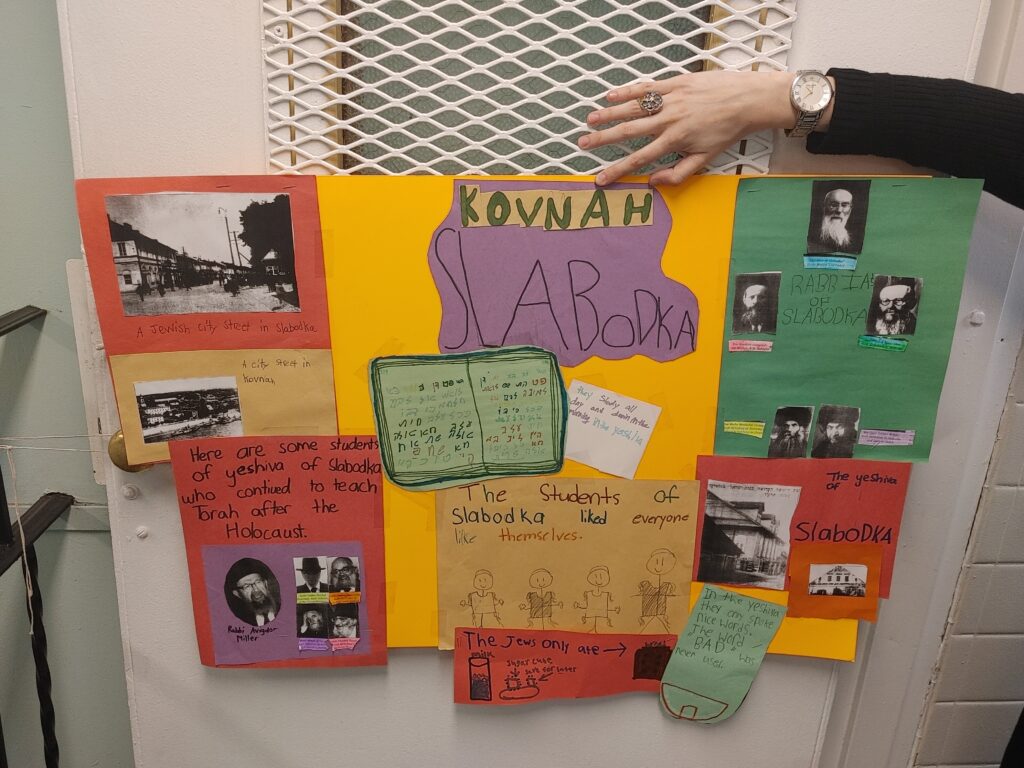
Fourth Grade
What a terrific and enjoyable week it was for 4th grade. Welcome everyone back from the Pesach break.
We learned in Chumash the amazing story of the dream that Avrum had. His children were going to be strangers and slaved in a land that did not belong to them. After that Hashem would take them out and give the Jewish people great wealth. This is the famous story that we just discussed at the Pesach Seder.
We also went through the famous Prefixes and Suffixes of words. We discussed the “Hay or the Lamed” when it comes in front of the Shoresh, root word.
In class we discussed how many “to do” Mitzvot there are and how many “not to do Mitzvot” there are.
One of the highlights of our day was counting the Omer. We used our Math skills to figure out how many days are left to the Chag of Shavuot.
We are very excited about our new “Kriah Pro” contest. We already have a lot of children eagerly waiting to see who will be this weeks winners. We are practicing a lot of Kriah to try to read the best we can.
Jacob was our first “Kirah Pro”. We are very proud of him.
We had Yom Hasha’ah day. We spoke about cities in Europe and their influences on the Jewish nation. The children were very interested in it.
Shabbat Shalom,
Rabbi Berelowitz
5th and 6th Girls
Dear parents.
Thank G-d, we had a very exciting week!
We learned about the special Mitzvot that we do to remind us that Hashem took us out of Egypt.
Mezuzah, kiddush on Shabbat, Shema prayer and shalosh regalim.
A massive Mazel tov to Victoria Kulishevsky upon her Bat Mitzvah!!
We had a spectacular party for her and we enjoyed many delicious treats and munchkins 😉
We learned a beautiful Bat Mitzvah song that taught us all about becoming a Bat Mitzvah. Every Mitzvah we do adds a special jewel to our crown and lasts forever and forever, giving us endless reward and blessing.
We then enjoyed candy jewel necklaces in honor.
On Friday, we learned about the special Mitzvah of Hafrashat Challah, which is a special woman’s Mitzvah.
We then made Challah dough together in a huge bowl. All the girls were a huge help and we had lots of fun!
We separated a piece of dough from the rest and Victoria had the merit to set it aside and make the blessing.
We all then used that special time to ask Hashem for anything we wanted. It was so amazing to watch the girls Daven to Hashem. They are all so amazing. You should be very proud.
The girls took home Challah recipe cards and Hafrashat Challah cards so they can make at home.
Shabbat shalom!
Looking forward to an amazing week.
5th and 6th Boys
Boy, did we begin covering ground!
We learned a new Mishna about what to do if someone began building his Suka with metal or wooden poles that are Pasul = not Kosher to use for S’chach = the kosher covering of a Suka. We also reviewed what we learned prior to Pesach break. We were proud of how much we learned, knew and could recall.
We studied a lot of laws of S’firat Ha’omer and the accompanying mourning laws.
We also covered this week’s Parasha, Parashat Acharei Mot, which discusses the death of 2 sons of aharon the Kohein Gadol. We learned that they entered illegally and that was [at least according to one opinion] the cause of their untimely death. We learned that on Yom Kippur, ALL Korbanot sacrifices were performed only by the Kohen Gadol. He had to dip in the Mikveh 5 times and wash his hands and feet 10 times on Yom Kippur. There were 2 goats used as sacrifices that day. The Kohen would pronounce Hashem’s name [real name. What we usually use is an acronym]. The people would respond with Boruch Shem K’vod Malchuto L’olam Vaed. We are not allowed to eat the blood of any animal [except fish]. We Jews are to have our meat and poultry properly cleaned = washed and salted in order to render it kosher for our consumption. Obviously, this will only help if it is from a kosher species and all the other kosher rituals are followed. We also learned about the Mitzvah of Kesuy Hadam = covering the blood .
This is only applicable to kosher wild animals i.e. deer, and to kosher birds.
We are a special people and not to follow/learn from the other nations.
Happy Birthday to:
Ethan Shenkman, and thanks for bringing in cupcakes, for all.
Happy birthday to:
Lenny Koza, and thanks for bringing in doughnuts.
Happy Birthday to:
Miss Etty Perez
Shabbat Shalom
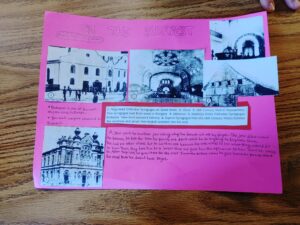
7th and 8th Girls
We really came back to school [academically] rocking and rolling!
We covered a really nice amount in our Parasha, parashat B’haalot’cha. This is the Parasha that we delve into in depth and detail
We covered that; originally the first born boys would have the privilege to be the Kohain and serve in the Mishkan and later in the Beit Hamikdosh.
They attained that status and were obligated to perform the service when Hashem killed the firstborn Egyptians but spared the Jews.
Then after they served the golden calf they lost that privilege.
Since then the Leviim took over. We learned that the Leviim had to study the service for 5 years in order to be entered into the actual service. Then they were able to serve until age 50.
We also learned about Karbon Pesach, and its accompanying laws:eat it with matzah and maror and no breaking bones etc
Next we learned about Pesach Sheini. That means second Pesach. This was for people who had a good excuse. Either they had become Tamei-impure to a dead jew or they were compelled to be too far away to bring their Korban Pesach on the original date.
We also learned how the jews knew where and when it was time to camp/travel in the midbar.
We covered many laws of S’firat Haomer and the laws of the accompanying mourning due to the loss of Rabbi Akiva’s 24,000 students during this time period.
We spent a period with the girls studying and decorating a poster in commemaration of Holocaust Memorial Day.
Stay tuned for more great lessons, next week
7th and 8th Boys
Hope everyone enjoyed their Pesach
We continued with great learning.
Being it is the time of Sefira, we started learning Perkei Avot. We learnt that a person should choose a path that is nice to the person that does it and is nice from people. We discussed the 3 ways of a person does not to come to do a sin.
In our Halacha class we spoke about topics of this time of year “Sefirat Ha’amoer”
We discussed many different scenarios that come up. We counted together in class and hung-up signs to remember which day it is.
We had an inspirational class remembering the Holocaust. We discussed much History related to that day and it was very inspiring.
Topics from the Parsha: Hashem told מֹשֶה to warn אַהַרֹן and theכֹּהַנִים never to enter the קֹדֶשׁ הַקָדָשִׁים . If they do go in they will die, just like נָדָב and אַבִיהוּ. Only on one day of the year, and only one person, was allowed to go into the קֹדֶשׁ הַקָדָשִׁים: onיוֹם כִּיפּוּר the כֹּהֵן גָדוֹל entered the קֹדֶשׁ הַקָדָשִׁים to do the special עַבוֹדָה for that day.
The כהן גדול would wear only 4 of his regular clothing – the ones without gold – when he went into the קדש הקדשים.
2 goats were brought to the כהן גדול . One was picked to be לַה’ (as a קָרְבָּן חַטָאת), and one was picked לַעַזָאזֵל – to be sent away to the desert and pushed off a high mountain.
Hashem told משה that every year, יום כיפּור – י’ תִּשְׁרֵי, is a fast day. It is a day of doingתְּשׁוּבָה so that Hashem will be מוֹחֵל us for our עַבֵירוֹת . However, not nice things that we did to our friends are not forgiven on יום כיפור, unless we ask our friends for מְחִילָה and they forgive us.
We heard the story of רֵישׁ לָקִישׁ who, as a young boy, was a robber, along with two friends. One day he met ר’ יוֹחָנָן who convinced him to us his strength and smart mind for learning Torah. His 2 friends chose not to join him and they continued doing עבירות. ריש לקיש became one of the leading teachers of the Torah in his time. He was careful to always give his money to poor people as a way of doing תּשובה for all the money that he had stolen. Hashem made it happen that he was נִפְטָר on the same day as his old 2 friends. In שָׁמַיִם his 2 friends saw all the reward that ריש לקיש was getting while they didn’t. They complained and said, “He was also a robber like us, why is he getting more reward then us?” Hashem answered them, “There is a big difference between you and him: תּשׁובה. He did תּשובה and you didn’t; now you are in – שׁמים it’s too late.”
Shabbat Shalom,
Rabbi Berelowitz
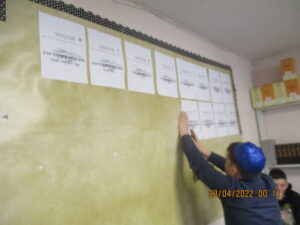
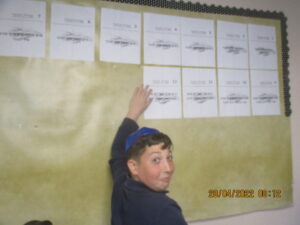
Elementary School
Kindergarten
This week kindergarten became experts at reading A and I long vowel words. They loved dressing up as Bossy E and yelling at the vowels to make the vowels say their name. They read a story about children creating different masks to dress up as characters in a play. They were super excited to learn they will be making a class book that I will send out to be published into a hard copy book. They began writing their first writing piece for their class book. In math they practiced ordinal numbers and positional words for their test. Their favorite game is finding the bear that is hiding in one of the ten backpacks by guessing which place the bear is in. They also learned all about the penny. In science they learned all about what plants need in order to survive. They also did a fun experiment to learn all about how animals can use blubber to survive in cold climates. In social studies they learned all about the community helpers that work in a restaurant by making a pretend restaurant.
.
First Grade
The first grade had a wonderful week exploring fantasy and reality. As we read the story of Mice and Beans students were delighted to see all of the interesting ways the mice helped Rosa Maria. In Math we completed the unit on parts of a whole. Students reviewed the map of North America and identified Canada and Mexico, our neighbors to the north and south. Finally, we made observations about speed and motion in Science. Students understand that force often determines the speed of objects. The first graders also had a great time creating ramps. They noticed the higher the incline, the further the vehicle would travel. It was great fun!
Second Grade
2nd grade had a busy week upon return from the Passover break. We are preparing for a math test on money, a grammar test on helping and linking verbs, and a social studies test on people at work. We are revising and completing our comparative essays as well. We also started a new book, Stuart Little! We are locked in and ready to work, as we approach the homestretch of the 21/22 school year! —
In science, students reviewed and were able to differentiate between a solid, liquid, and gas. Students gave examples of changes in states of matter from heating and cooling; differences between physical and chemical changes.
Mr. A. Ferrera B.S.Ed
Generalist Teacher, 2nd grade
SIHA
Third Grade
An exciting week for 3rd graders; they can’t wait to demonstrate their experiments and projects for the science fair. This week students reviewed chapter concepts about landforms, Earth’s water features, slow and fast changes on Earth’s surface. A test chapter was assigned to students.
Fourth Grade
This week we completed our Math state test and had a great party on Friday celebrating.
In math we are finishing up our unit on geometry. Measuring angles , identifying angles and triangles.
In ELA we started a unit on pronouns and story writing.
In Social Studies we reviewed for our up coming test next week on exploring the West.
In science, students modeled the water cycle and described the changes that occur; identified three states of water; described different kinds of clouds and forms of precipitation.
Fifth Grade
In grammar, 5B learned about helping verbs. They continued to work on their vocabulary study. 5B wrapped up their novel study of Lightning Thief, and completed all of their writing work about that novel.
In Grammar, 5A learned about commas and comma rules. Students also wrapped up their novel study of The Westing Game.
Both classes also completed a special project for Holocaust Remembrance Day.
In science, students were able to compare a physical and chemical change; conclude that physical and chemical properties can be used to identify substances and to separate mixtures.
During science class students were able to identify different substances using strip indicators and identify acid and bases.
Special announcement to Ella Dery for such an amazing lab report about Mixtures and Solutions.
In math, 5th grade is learning about volume.
Middle School
Middle School ELA and Social Studies
6th Grade
Sixth graders wrapped up their novel study of Chasing Licoln’s Killer. In grammar, we learned about adjectives and adverbs. We also learned about connotative meaning of words, and practiced writing with them.
In social studies, sixth grade learned about Alexander the Great as well as discussed the cultural influence of the Ancient Greeks.
7th Grade
Seventh graders had a busy week. They started their novel study of the Giver. They also completed their math state tests!
In Social Studies, Seventh graders learned about the presidency of George Washington. We also learned about the beginnings of political parties in America, and the conflict between Jefferson and Hamilton.
8th Grade
Eighth graders had a busy week! We wrapped up our novel study of Fahrenheit 451. They also started their next novel: The Book Thief! Students also created presentations for Holocaust Rememberance Day and presented their research to the 7th Grade.
In Social Studies, we started our unit on the French Revolution by discussing the causes of and the initial events of the French Revolution.

Middle School Math
6th grade started their unit on algebra.
7th grade is reviewing how to solve complex algebraic equations.
8th honors is finishing up their unit on quadratics.
8th is learning about slope and linear equations.
Middle School Science
6th grade
Students learned and classified planets according to their location in the solar system; were able to identify the inner and outer planets; compare and contrast the similarities and differences between Earth and the other inner planets; were able to recognize different types of galaxies.
7th Grade Science
Students are investigating how our body systems work together to maintain homeostasis. They are currently taking a journey through the digestive system and discovering how nutrition and circulation play an important role in supplying our body with the nutrients it provides and how it actually gets through our bodies.
8th Grade Science
Students are preparing for the Living Environment Regent by taking practice exams and working through various aspects of this regent. In addition, students are investigating how energy flows through ecosystems, how biotic and abiotic factors affect those ecosystems and the importance of interdependence within each system.
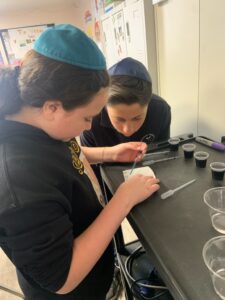
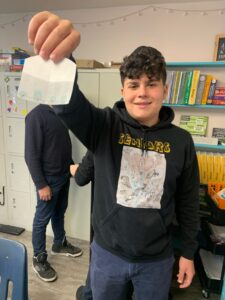
Jewish History
7th grade began learning about the giving of the Torah. We learned why the Jewish people accepted the Torah and how the Torah was given in front of 3 million witnesses who all told over to their children the same course of events. Ilan and Naomi had some very good questions.
8th grade learned about the Talmud, how it was written, why it was written, and how it was structured. We also began learning about Jewish life during the times of the Geonim. The Jews were a shining light in the dark times of the middle ages.

